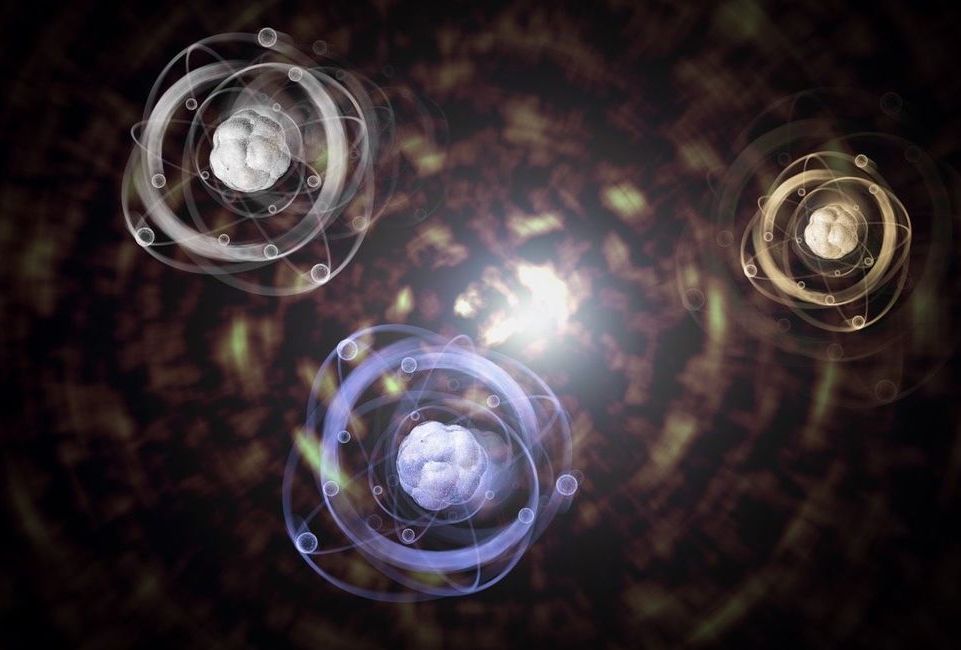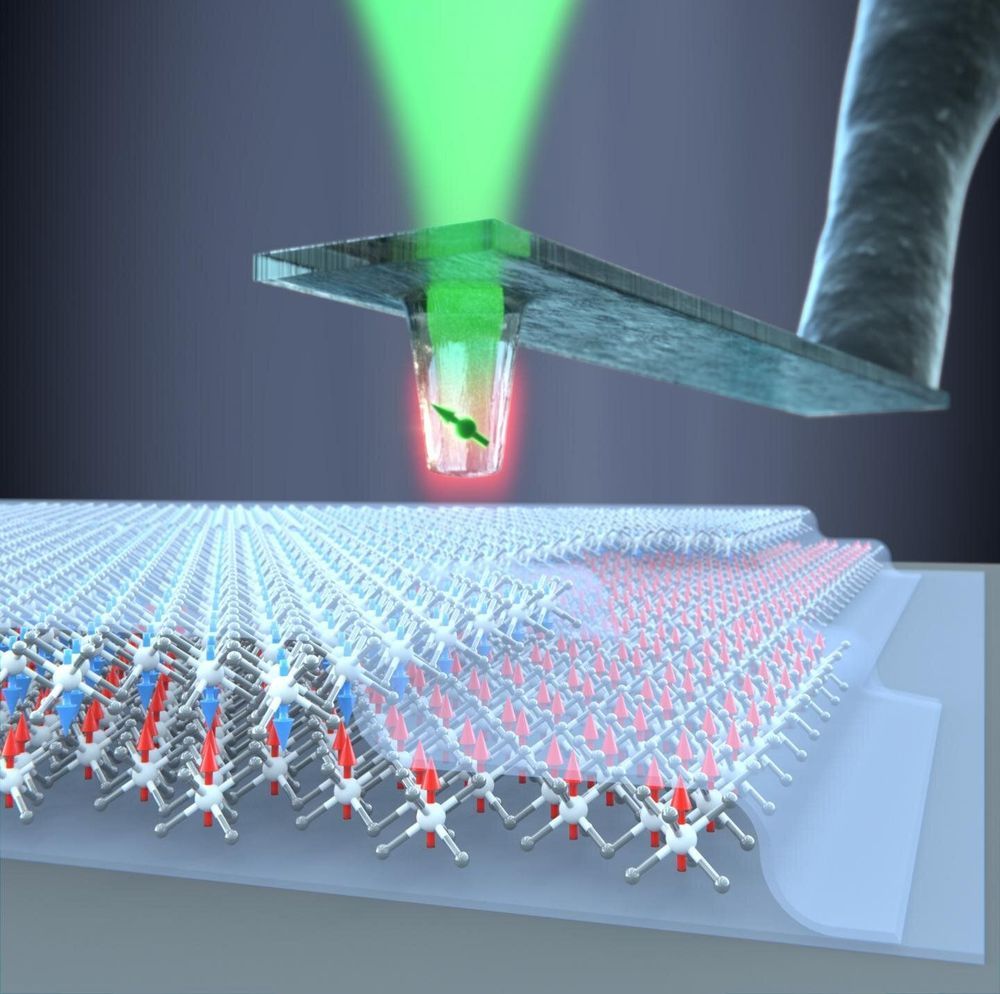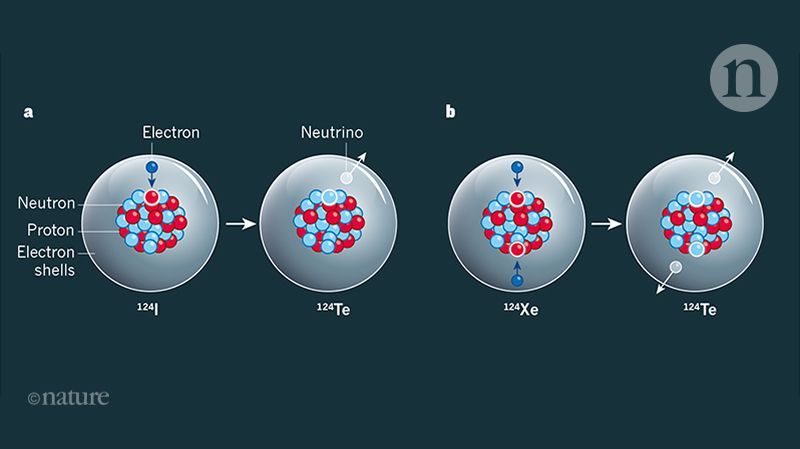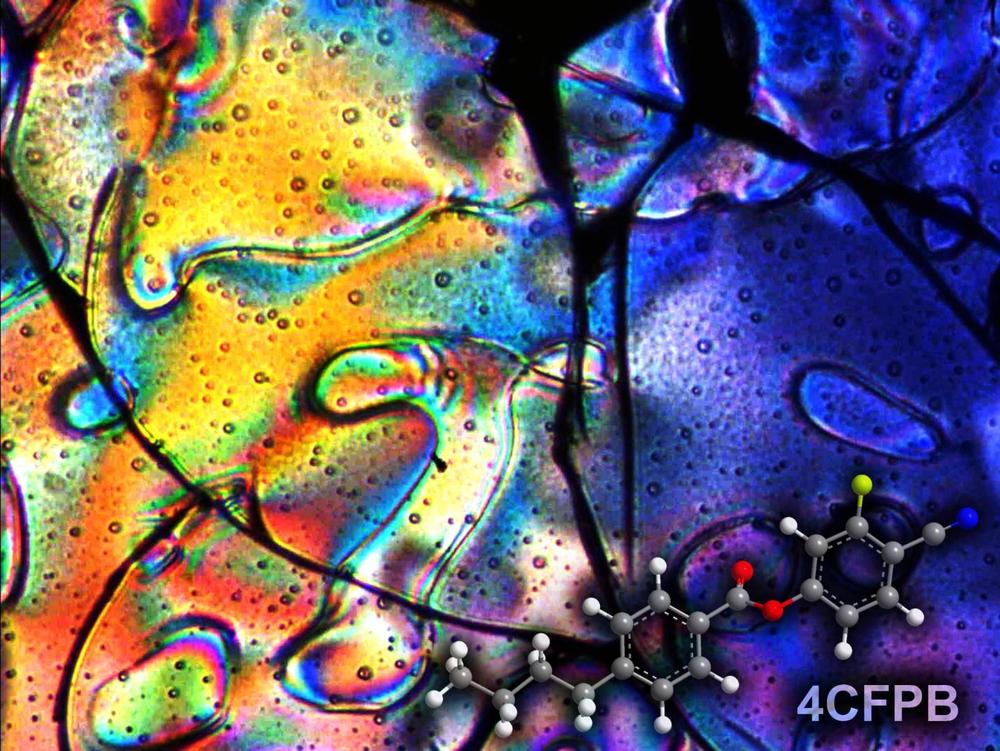Archive for the ‘particle physics’ category: Page 463
Apr 27, 2019
The World’s Largest Atom Smasher Could Be Tweaked to Hunt ‘Dark World’ Particles
Posted by Genevieve Klien in categories: cosmology, particle physics
When it reopens in 2021, the Large Hadron collider should be able to detect rare particles with possible links to the world of dark matter and energy.
Apr 26, 2019
Unprecedented insight into two-dimensional magnets using diamond quantum sensors
Posted by Quinn Sena in categories: nanotechnology, particle physics, quantum physics
For the first time, physicists at the University of Basel have succeeded in measuring the magnetic properties of atomically thin van der Waals materials on the nanoscale. They used diamond quantum sensors to determine the strength of the magnetization of individual atomic layers of the material chromium triiodide. In addition, they found a long-sought explanation for the unusual magnetic properties of the material. The journal Science has published the findings.
The use of atomically thin, two-dimensional van der Waals materials promises innovations in numerous fields in science and technology. Scientists around the world are constantly exploring new ways to stack different single atomic layers and thus engineer new materials with unique, emerging properties.
These super-thin composite materials are held together by van der Waals forces and often behave differently to bulk crystals of the same material. Atomically thin van der Waals materials include insulators, semiconductors, superconductors and a few materials with magnetic properties. Their use in spintronics or ultra-compact magnetic memory media is highly promising.
Apr 26, 2019
Dark-matter detector observes exotic nuclear decay
Posted by Derick Lee in categories: cosmology, particle physics
From the point of view of nuclear theory, the decay rates of both two-neutrino and neutrinoless double electron capture can be connected to quantities called nuclear matrix elements. Such quantities contain information about nuclear structure that is extracted from nuclear models and can be applied by researchers in the field of nuclear-structure theory.
For half a century, our view of the world has been based on the standard model of particle physics. However, this view has been challenged by theories that can overcome some of the limitations of the standard model. These theories allow neutrinos to be Majorana particles (that is, they are indistinguishable from their own antiparticles) and predict the existence of weakly interacting massive particles (WIMPs) as the constituents of invisible ‘dark matter’ in the Universe. Majorana neutrinos mediate a type of nuclear decay called neutrinoless double-β decay, an example of which is neutrinoless double electron capture. A crucial step towards observing this decay is to detect its standard-model equivalent: two-neutrino double electron capture. In a paper in Nature, the XENON Collaboration reports the first direct observation of this process in xenon-124 nuclei, using a detector that was built to detect WIMPs.

Continue reading “Dark-matter detector observes exotic nuclear decay” »
Apr 25, 2019
Inside Giant Atom Smasher, Physicists See the Impossible: Light Interacting with Light
Posted by Quinn Sena in category: particle physics
Apr 25, 2019
Researchers Just Measured an Atom with a Half-Life of 18 Sextillion Years
Posted by Quinn Sena in categories: cosmology, particle physics
Deep inside a mountain in central Italy, scientists are laying a trap for dark matter. The bait? A big metal tank full of 3.5 tons (3,200 kilograms) of pure liquid xenon. This noble gas is one of the cleanest, most radiation-proof substances on Earth, making it an ideal target for capturing some of the rarest particle interactions in the universe.
It all sounds vaguely sinister; said Christian Wittweg, a doctoral candidate at the University of Münster in Germany, who has worked with the so-called Xenon collaboration for half a decade, going to work every day feels like “paying a Bond villain a visit.” So far, the mountain-dwelling researchers haven’t captured any dark matter. But they recently succeeded in detecting one of the rarest particle interactions in the universe. [11 Biggest Unanswered Questions About Dark Matter]
According to a new study published today (April 24) in the journal Nature, the team of more than 100 researchers measured, for the first time ever, the decay of a xenon-124 atom into a tellurium 124 atom through an extremely rare process called two-neutrino double electron capture. This type of radioactive decay occurs when an atom’s nucleus absorbs two electrons from its outer electron shell simultaneously, thereby releasing a double dose of the ghostly particles called neutrinos.
Continue reading “Researchers Just Measured an Atom with a Half-Life of 18 Sextillion Years” »
Apr 25, 2019
Extracting something from nothing: A bright glow from empty space
Posted by Quinn Sena in categories: nuclear energy, particle physics, quantum physics
Particles travelling through empty space can emit bright flashes of gamma rays by interacting with the quantum vacuum, according to a new study by researchers at the University of Strathclyde.
It has long been known that charged particles, such as electrons and protons, produce the electromagnetic equivalent of a sonic boom when their speeds exceed that of photons in the surrounding medium. This effect, known as Cherenkov emission, is responsible for the characteristic blue glow from water in a nuclear reactor, and is used to detect particles at the CERN Large Hadron Collider.
According to Einstein, nothing can travel faster than light in vacuum. Because of this, it is usually assumed that the Cherenkov emission cannot occur in vacuum. But according to quantum theory, the vacuum itself is packed full of “virtual particles”, which move momentarily in and out of existence.
Continue reading “Extracting something from nothing: A bright glow from empty space” »
Apr 24, 2019
Nanocomponent is a quantum leap for Danish physicists
Posted by Quinn Sena in categories: computing, internet, particle physics, quantum physics
University of Copenhagen researchers have developed a nanocomponent that emits light particles carrying quantum information. Less than one-tenth the width of a human hair, the miniscule component makes it possible to scale up and could ultimately reach the capabilities required for a quantum computer or quantum internet. The research result puts Denmark at the head of the pack in the quantum race.
Teams around the world are working to develop quantum technologies. The focus of researchers based at the Center for Hybrid Quantum Networks (Hy-Q) at the University of Copenhagen’s Niels Bohr Institute is on developing quantum communication technology based on light circuits, known as nanophotonic circuits. The UCPH researchers have now achieved a major advancement.
“It is a truly major result, despite the component being so tiny,” says Assistant Professor Leonardo Midolo, who has been working towards this breakthrough for the past five years.
Continue reading “Nanocomponent is a quantum leap for Danish physicists” »
Apr 24, 2019
Atom interaction discovery valuable for future quantum technologies
Posted by Quinn Sena in categories: particle physics, quantum physics
By breaking with conventionality, University of Otago physicists have opened up new research and technology opportunities involving the basic building block of the world—atoms.
In a study, just published in Nature Communications, researchers put one atom inside each of two laser beams before moving them together until they started to interact with each other.
Co-author Associate Professor Mikkel F. Andersen, of the Department of Physics, says this allows the atoms to exchange properties in a way which could be “very useful” for future quantum technologies.
Continue reading “Atom interaction discovery valuable for future quantum technologies” »
Apr 24, 2019
Liquid crystals in nanopores produce a surprisingly large negative pressure
Posted by Quinn Sena in categories: cosmology, particle physics, quantum physics
Negative pressure governs not only the Universe or the quantum vacuum. This phenomenon, although of a different nature, appears also in liquid crystals confined in nanopores. At the Institute of Nuclear Physics of the Polish Academy of Sciences in Cracow, a method has been presented that for the first time makes it possible to estimate the amount of negative pressure in spatially limited liquid crystal systems.
At first glance, negative pressure appears to be an exotic phenomenon. In fact, it is common in nature, and what’s more, occurs on many scales. On the scale of the Universe, the cosmological constant is responsible for accelerating the expansion of spacetime. In the world of plants, attracting intermolecular forces (not: expanding thermal motions) guarantee the flow of water to the treetops of all trees taller than ten metres. On the quantum scale, the pressure of virtual particles of a false vacuum leads to the creation of an attractive force, appearing, for example, between two parallel metal plates (the famous Casimir effect).
“The fact that a negative pressure appears in liquid crystals confined in nanopores was already known. However, it was not known how to measure this pressure. Although we also cannot do this directly, we have proposed a method that allows this pressure to be reliably estimated,” says Dr. Tomasz Rozwadowski from the Institute of Nuclear Physics of the Polish Academy of Sciences (IFJ PAN) in Cracow, the first author of a publication in the Journal of Molecular Liquids.
Continue reading “Liquid crystals in nanopores produce a surprisingly large negative pressure” »

















